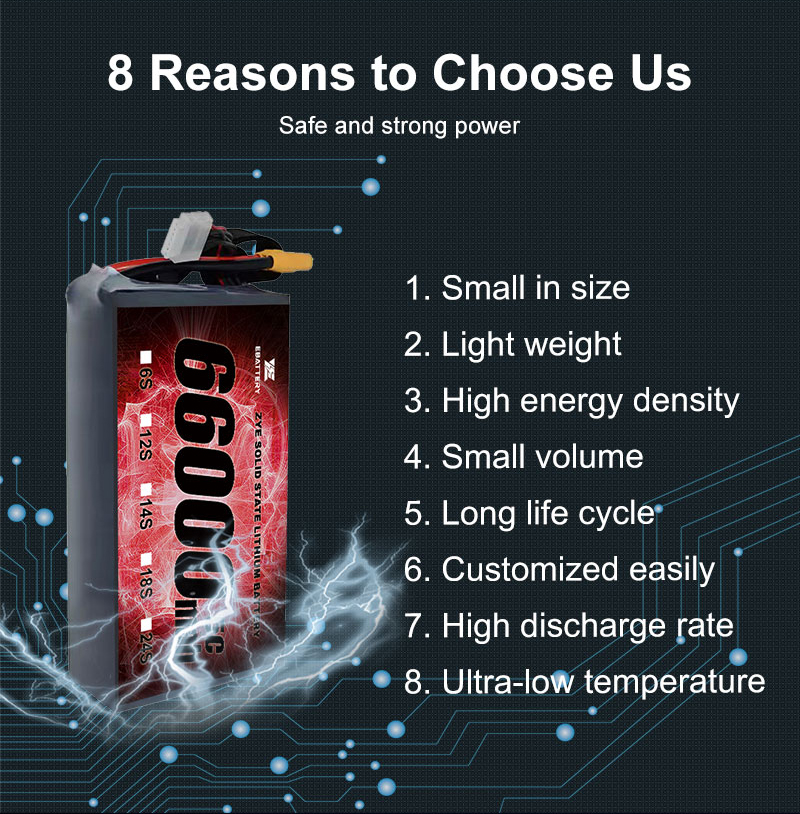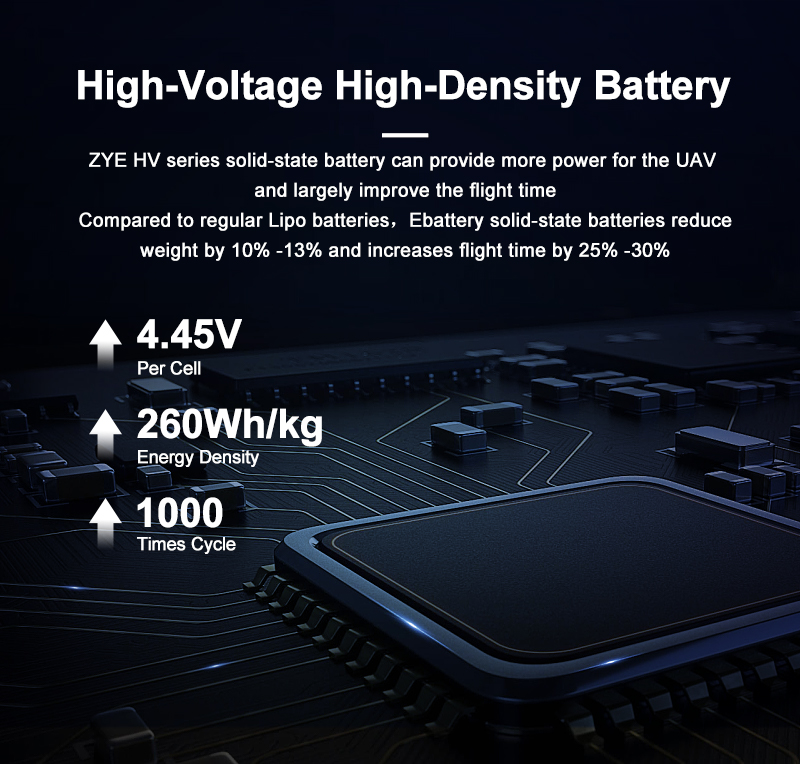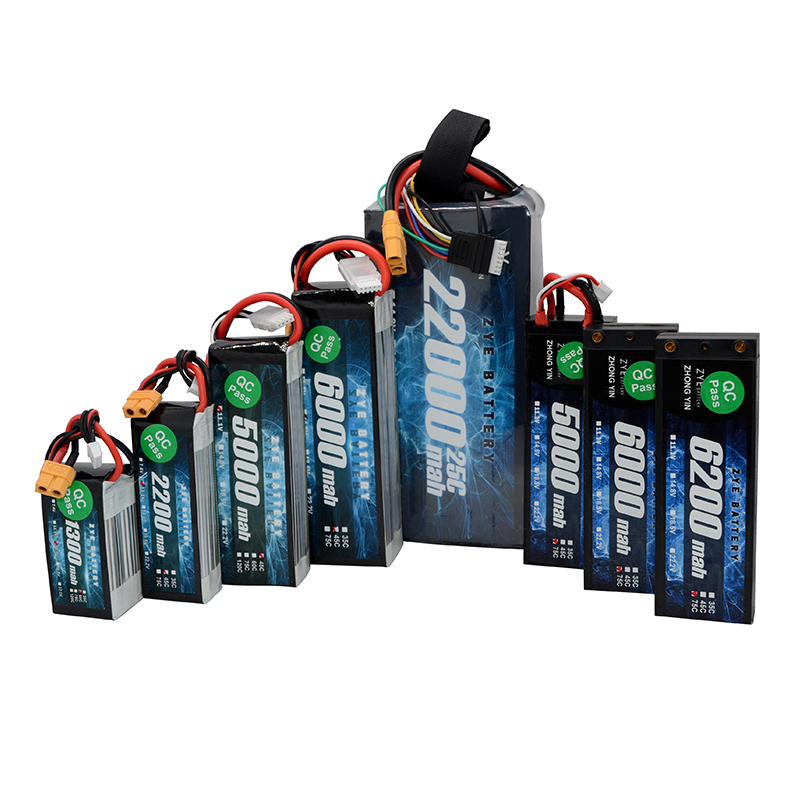How often should I inspect my drone lipo batteries?
2025-08-27
Inspecting your drone LiPo (Lithium Polymer) batteries regularly is critical to preventing safety hazards (such as swelling, short circuits, or fires), extending battery lifespan, and ensuring reliable drone performance. Below is a detailed breakdown of inspection frequency and key checkpoints to avoid missed risks.

1. Every Time Before Use (Critical Pre-Flight Inspection)
This is the most non-negotiable inspection—never skip it, even if the battery was stored properly or used recently.
Swelling or deformation: Press gently on the battery’s surface—if it feels “puffy,” bulges, or doesn’t lie flat, discard it immediately. Swelling is a sign of internal gas buildup (caused by overcharging, over-discharging, or cell damage) and means the battery is unsafe to use.
Physical damage: Look for cracks, tears, or punctures in the battery casing. Even small splits can expose internal cells to moisture or debris, leading to short circuits.
Connector condition: Inspect the battery’s plug and wires for fraying, bent pins, or corrosion. Damaged connectors can cause poor power transfer (leading to weak flight) or arcing.
Voltage check: Use a LiPo voltage checker or your drone’s onboard display to confirm each cell’s voltage. For a 3S (3-cell) battery, each cell should read 3.7V–4.2V (fully charged) or no lower than 3.2V (if partially charged). If cell voltages differ by more than 0.1V (a “cell imbalance”), balance-charge the battery first—imbalanced cells wear out faster and risk failure.
2. Every Time After Use (Post-Flight Inspection)
Post-flight checks help catch issues caused by the flight (e.g., overheating, over-discharging) before they worsen.
Temperature: Touch the battery gently—if it’s too hot to hold comfortably (over ~140°F/60°C), it’s a red flag. Excessive heat indicates the battery was overworked or has internal resistance issues. Let it cool to room temperature before charging or storing.
Voltage (again): Ensure the battery’s total voltage is no lower than 3.0V per cell. LiPos are irreversible damaged if discharged below 3.0V per cell—this “deep discharge” breaks down internal chemistry and increases fire risk.
Visible wear: Check for new scratches, wire damage, or connector wear that may have occurred during landing .
3. Weekly Inspection (For Batteries in Regular Use)
If you fly your drone 1–3 times per week, do a more thorough weekly inspection to catch gradual degradation that pre/post-flight checks might miss. This is especially important for batteries used in demanding conditions.
Full cell balance: Use a LiPo charger with a balance function to check if all cells maintain consistent voltage. If balancing takes longer than usual, or cells still differ by >0.1V after balancing, the battery is aging and may need replacement soon.
Casing integrity: Inspect the edges and corners of the battery for small bulges or soft spots that weren’t visible during quick pre-flight checks.
Wire continuity: Gently wiggle the wires near the connector—if the voltage fluctuates, there may be a loose solder joint (a fire hazard). Do not attempt to repair this unless you have experience with LiPo soldering; replace the battery instead.
4. Monthly Inspection (For Stored or Seldom-Used Batteries)
If you store batteries for 2+ weeks without use (e.g., off-season, travel), monthly checks prevent “storage degradation”—a common issue where LiPos lose capacity or swell if stored at incorrect voltages or temperatures.
5. Special Inspections: After Accidents or Extreme Conditions
Always inspect a battery immediately if:
The drone crashed (even a minor fall can damage internal cells).
The battery was exposed to water, dirt, or debris.
The battery shut down mid-flight (a sign of over-discharging or cell failure).
You flew in extreme temperatures (e.g., below freezing—cold LiPos can crack internally, or above 90°F/32°C—heat damages cell chemistry).

Proper charging practices are essential for maintaining the performance and longevity of your lipo batteries. By following the tips and guidelines outlined in this article, you'll be well-equipped to charge your high-voltage LiPo batteries safely and effectively.
Are you looking for high-quality, reliable LiPo batteries for your high-performance applications? Look no further than ZYE's range of advanced LiPo solutions. Our batteries are engineered to deliver exceptional power, safety, and longevity. Contact us today at coco@zyepower.com to learn more about our products and how we can power your projects to new heights.
























































